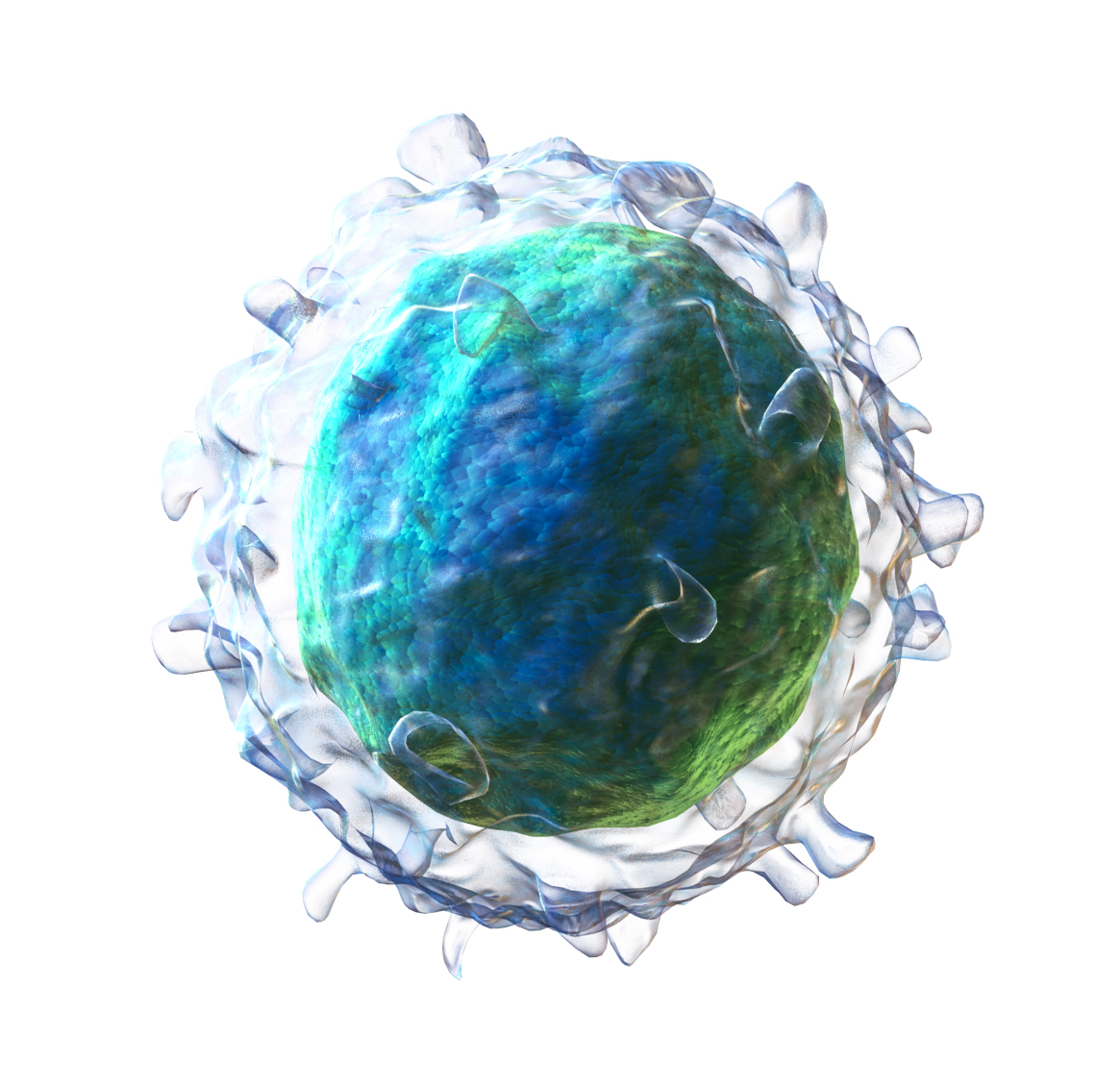Data Show Long-Term Activity With Tisagenlecleucel in Follicular Lymphoma
Tisagenlecleucel shows high rates of MRD-negative status among patients with relapsed/refractory follicular lymphoma in the ELARA trial.
"Correlative analyses suggest that most baseline high-risk disease characteristics (double-refractory disease, bulky disease, POD24, and high FLIPI) are not associated with inferior efficacy following tisagenlecleucel infusion in patients with relapsed or refractory follicular lymphoma," according to the study authors.

Four-year findings showed sustained efficacy and tolerability among patients with relapsed/refractory follicular lymphoma who received tisagenlecleucel (Kymirah), according to data from the phase 2 ELARA trial (NCT03568461) presented at the 2024 American Society of Hematology Annual Meeting & Exposition (ASH).1
At a median follow-up of 53 months (range, 46-62), the median overall survival (OS) in efficacy-evaluable patients (n = 94) was not reached and the 4-year OS rate was 79.3%. The median progression-free survival (PFS) was 53.3 months (95% CI,18.2–not evaluable). The 4-year PFS rates were 50.2% overall and 66.1% in patients who achieved a complete response (CR). The CR rate was 69.1%.
Presenting author Catherine Thieblemont, MD, PhD,Service Hémato-Oncologie, Hôpital Saint- Louis, Paris, France, noted that these efficacy benefits extended to high-risk patient subgroups. “Correlative analyses suggest that most baseline high-risk disease characteristics (double-refractory disease, bulky disease, POD24, and high FLIPI) are not associated with inferior efficacy following tisagenlecleucel infusion in patients with relapsed or refractory follicular lymphoma,” said Thieblemont.
Specifically, among patient subgroups at high-risk, the 4-year OS rates were 80.8% in patients with disease progression within 2 years of frontline systemic therapy (POD24), 73.2% in patients with a high Follicular Lymphoma International Prognostic Index (FLIPI) score, 73.0% in patients with bulky disease, 83.7% in patients who were double refractory, and 65.5% in patients with high tumor burden. The 4-year PFS rates were 45.5% (POD24), 45.5% (high FLIPI), 45.2% (bulky disease), 52.8% (double refractory), and 23.2% (high tumor burden). The CR rates were reported for 4 of these subgroups: 60.7% (POD24), 63.2% (high FLIPI), 66.1% (bulky disease), and 67.7% (double refractory).
Minimal residual disease (MRD) data were available for 32 (33%) of the 97 total patients who were enrolled in the study. Of these 32 patients, 87.5% (n = 28) reached MRD-negative status at any time point. Further, MRD negativity was reached by 82.8% (n = 24 of 29) of evaluable patients at day 28, 77.8% (n = 14 of 18) of evaluable patients at month 3, 72.7% (n = 16 of 22) of evaluable patients at month 6, and 82.4% (n = 14 of 17) of evaluable patients at month 12.
“High frequencies of MRD-negative status were achieved among MRD-evaluable patients, showing that tisagenlecleucel therapy can achieve deep response in treated patients,” said Thieblemont.
No new safety signals with tisagenlecleucel were observed since the previous analysis, according to Thieblemont. The safety population included all 97 treated patients. Twenty-four (28.6%) patients experienced a grade ≥3 adverse event (AE) and 16 (19.0%) patients had a least 1 infection at 1 year or longer post induction. Grade 1/2 cytokine release syndrome (CRS) occurred in about half (48.5%) of patients within 8 weeks of infusion; however, only 1 patient experienced CRS (grade ≥3) at more than 1 year post infusion.
Several second primary malignancies occurred among 6 patients: basal cell carcinoma (n = 2), squamous cell carcinoma (n = 2), acute myeloid leukemia (n = 1), bladder transitional cell carcinoma (n = 1), Bowen's disease (n = 1), malignant melanoma (n = 1), metastatic squamous cell carcinoma (n = 1), and myelodysplastic syndrome (n = 1).
There were 19 on-study deaths as of the data cutoff: 8 due to progressive disease 1 from euthanasia, and 10 from adverse events—1 each for acute myeloid leukemia, bladder transitional cell carcinoma, cardiac arrest, cytokine release syndrome, encephalitis, gastrointestinal hemorrhage, infection, metastatic squamous cell carcinoma, pneumonia, sepsis.
Study Design and Patient Characteristics
The study included 97 patients with relapsed/refractory follicular lymphoma (grades I-IIIa) who had received at least 2 lines of systemic therapy (including an alkylating agent and anti-CD20 monoclonal antibody). Patients received a single infusion of tisagenlecleucel (0.6-6×108 CAR+ viable T cells). The study design allowed bridging therapy.
The median patient age at baseline was 57.0 years (range, 29-73) and 43% of patients had an ECOG performance status of 1 or higher. Overall, 86% of patients had stage III-IV disease at study entry, 38% had bone marrow involvement, 65% had bulky disease, and 60% were FLIPI high (≥3). The median number of prior therapies was 4 (range, 2-13), 63% had POD24, and 78% were refractory to their last line of therapy. Further, 71% were refractory to at least 2 regimens, 68% were double refractory (anti-CD 20 monoclonal antibody and alkylating agent), and 14% were refractory to PI3K inhibitors. A little over one-third (36%) of patients had prior autologous hematopoietic stem cell transplant.
Based on previously reported results from the ELARA trial, the FDA approved tisagenlecleucel in May 2022 for the treatment of adult patients with relapsed or refractory follicular lymphoma after 2 or more lines of systemic therapy.2
References
- Thieblemont C, Dreyling M, Dickinson MJ, et al. Clinical Outcomes of Patients with High-Risk Relapsed/Refractory Follicular Lymphoma Treated with Tisagenlecleucel: Phase 2 ELARA 4-Year Update. Blood. 2024; 144 (suppl 1): 3034. doi:10.1182/blood-2024-201730
- FDA approves tisagenlecleucel for relapsed or refractory follicular lymphoma. Published online May 27, 2022. Accessed December 9, 2024. https://www.fda.gov/drugs/resources-information-approved-drugs/fda-approves-tisagenlecleucel-relapsed-or-refractory-follicular-lymphoma